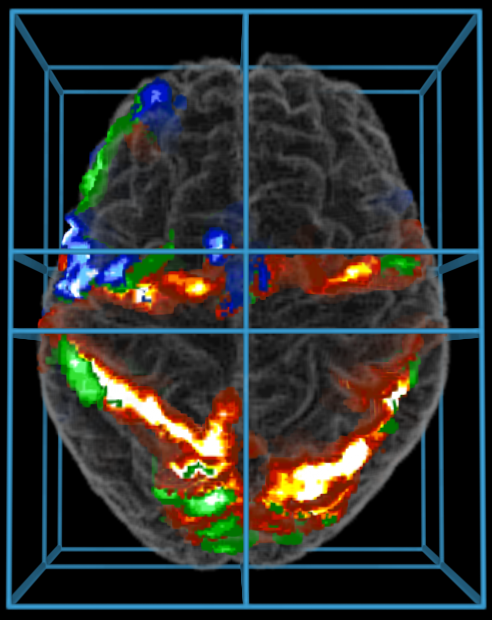BrainVoyager QX v2.8

Volume Rendering
Good visualizations of neuroimaging data is an important means to help in understanding complex anatomical and functional information. Surface rendering has been the dominant visualization means in BrainVoyager for two major reasons: 1) It allows morphing of extracted cortex meshes, e.g. for inflation, flattening and cortex-based alignment, and 2) it allows fast navigation of rendered meshes, e.g. it is as easy and fast to rotate and zoom the scene to investigate meshes from any desired point of view. Volume rendering is another technique that is often used to visualize volumetric data. Volume rendering can handle some visualization aspects better than surface rendering, e.g. transparency, but it is usually too slow to allow fast navigation. Previous versions of BrainVoyager QX (up to 2.1) provided volume rendering in the 3D Volume Tools dialog but it was very slow and limited with respect to advanced rendering features. Since BrainVoyager QX 2.2, a real-time volume renderer with advanced features is available.
Copyright © 2014 Rainer Goebel. All rights reserved.